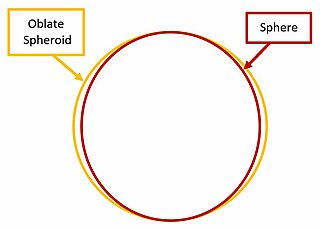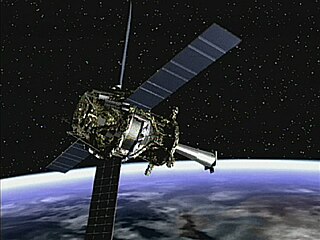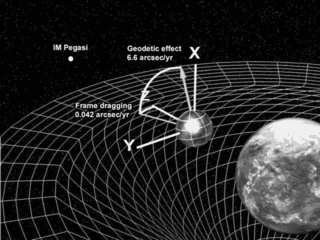
Following the discovery of the planet Neptune in 1846, there was considerable speculation that another planet might exist beyond its orbit. The search began in the mid-19th century and continued at the start of the 20th with Percival Lowell's quest for Planet X. Lowell proposed the Planet X hypothesis to explain apparent discrepancies in the orbits of the giant planets, particularly Uranus and Neptune, speculating that the gravity of a large unseen ninth planet could have perturbed Uranus enough to account for the irregularities.

The following outline is provided as an overview and topical guide to space science:

Astronomy is a natural science that studies celestial objects and the phenomena that occur in the cosmos. It uses mathematics, physics, and chemistry in order to explain their origin and their overall evolution. Objects of interest include planets, moons, stars, nebulae, galaxies, meteoroids, asteroids, and comets. Relevant phenomena include supernova explosions, gamma ray bursts, quasars, blazars, pulsars, and cosmic microwave background radiation. More generally, astronomy studies everything that originates beyond Earth's atmosphere. Cosmology is a branch of astronomy that studies the universe as a whole.

An equatorial bulge is a difference between the equatorial and polar diameters of a planet, due to the centrifugal force exerted by the rotation about the body's axis. A rotating body tends to form an oblate spheroid rather than a sphere.

Gravity Probe B (GP-B) was a satellite-based experiment to test two unverified predictions of general relativity: the geodetic effect and frame-dragging. This was to be accomplished by measuring, very precisely, tiny changes in the direction of spin of four gyroscopes contained in an Earth-orbiting satellite at 650 km (400 mi) of altitude, crossing directly over the poles.
The Pioneer anomaly, or Pioneer effect, was the observed deviation from predicted accelerations of the Pioneer 10 and Pioneer 11 spacecraft after they passed about 20 astronomical units (3×109 km; 2×109 mi) on their trajectories out of the Solar System. The apparent anomaly was a matter of much interest for many years but has been subsequently explained by anisotropic radiation pressure caused by the spacecraft's heat loss.
Tests of general relativity serve to establish observational evidence for the theory of general relativity. The first three tests, proposed by Albert Einstein in 1915, concerned the "anomalous" precession of the perihelion of Mercury, the bending of light in gravitational fields, and the gravitational redshift. The precession of Mercury was already known; experiments showing light bending in accordance with the predictions of general relativity were performed in 1919, with increasingly precise measurements made in subsequent tests; and scientists claimed to have measured the gravitational redshift in 1925, although measurements sensitive enough to actually confirm the theory were not made until 1954. A more accurate program starting in 1959 tested general relativity in the weak gravitational field limit, severely limiting possible deviations from the theory.

The following outline is provided as an overview of and topical guide to astronomy:

The geodetic effect represents the effect of the curvature of spacetime, predicted by general relativity, on a vector carried along with an orbiting body. For example, the vector could be the angular momentum of a gyroscope orbiting the Earth, as carried out by the Gravity Probe B experiment. The geodetic effect was first predicted by Willem de Sitter in 1916, who provided relativistic corrections to the Earth–Moon system's motion. De Sitter's work was extended in 1918 by Jan Schouten and in 1920 by Adriaan Fokker. It can also be applied to a particular secular precession of astronomical orbits, equivalent to the rotation of the Laplace–Runge–Lenz vector.
In general relativity, Lense–Thirring precession or the Lense–Thirring effect is a relativistic correction to the precession of a gyroscope near a large rotating mass such as the Earth. It is a gravitomagnetic frame-dragging effect. It is a prediction of general relativity consisting of secular precessions of the longitude of the ascending node and the argument of pericenter of a test particle freely orbiting a central spinning mass endowed with angular momentum .

Discovery and exploration of the Solar System is observation, visitation, and increase in knowledge and understanding of Earth's "cosmic neighborhood". This includes the Sun, Earth and the Moon, the major planets Mercury, Venus, Mars, Jupiter, Saturn, Uranus, and Neptune, their satellites, as well as smaller bodies including comets, asteroids, and dust.
In astronomy, planetary mass is a measure of the mass of a planet-like astronomical object. Within the Solar System, planets are usually measured in the astronomical system of units, where the unit of mass is the solar mass (M☉), the mass of the Sun. In the study of extrasolar planets, the unit of measure is typically the mass of Jupiter (MJ) for large gas giant planets, and the mass of Earth (ME) for smaller rocky terrestrial planets.

The history of Mars observation is about the recorded history of observation of the planet Mars. Some of the early records of Mars' observation date back to the era of the ancient Egyptian astronomers in the 2nd millennium BCE. Chinese records about the motions of Mars appeared before the founding of the Zhou dynasty. Detailed observations of the position of Mars were made by Babylonian astronomers who developed arithmetic techniques to predict the future position of the planet. The ancient Greek philosophers and Hellenistic astronomers developed a geocentric model to explain the planet's motions. Measurements of Mars' angular diameter can be found in ancient Greek and Indian texts. In the 16th century, Nicolaus Copernicus proposed a heliocentric model for the Solar System in which the planets follow circular orbits about the Sun. This was revised by Johannes Kepler, yielding an elliptic orbit for Mars that more accurately fitted the observational data.

LARES is a passive satellite system of the Italian Space Agency.
Frame-dragging is an effect on spacetime, predicted by Albert Einstein's general theory of relativity, that is due to non-static stationary distributions of mass–energy. A stationary field is one that is in a steady state, but the masses causing that field may be non-static — rotating, for instance. More generally, the subject that deals with the effects caused by mass–energy currents is known as gravitoelectromagnetism, which is analogous to the magnetism of classical electromagnetism.

Priyamvada (Priya) Natarajan is a professor in the departments of astronomy and physics at Yale University. She is noted for her work in mapping dark matter and dark energy, particularly with her work in gravitational lensing, and in models describing the assembly and accretion histories of supermassive black holes. She authored the book Mapping the Heavens: The Radical Scientific Ideas That Reveal the Cosmos.

Planetary science is the scientific study of planets, celestial bodies and planetary systems and the processes of their formation. It studies objects ranging in size from micrometeoroids to gas giants, aiming to determine their composition, dynamics, formation, interrelations and history. It is a strongly interdisciplinary field, which originally grew from astronomy and Earth science, and now incorporates many disciplines, including planetary geology, cosmochemistry, atmospheric science, physics, oceanography, hydrology, theoretical planetary science, glaciology, and exoplanetology. Allied disciplines include space physics, when concerned with the effects of the Sun on the bodies of the Solar System, and astrobiology.
Ignazio Ciufolini is an Italian physicist active in the field of gravitational physics and general relativity.
ICRA, the International Center for Relativistic Astrophysics is an international research institute for relativistic astrophysics and related areas. Its members are seven Universities and four organizations. The center is located in Rome, Italy.











